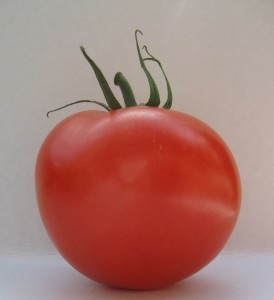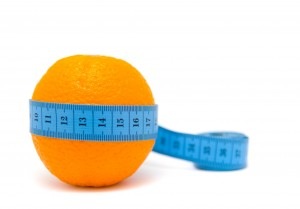It’s a banner year for tomatoes in the northeast and I have red ones — both large and small — pinkish ones that are sort of heart shaped, plums, green striped ones, and canary yellow ones. The voracious woodchucks and chipmunks (I watched a little Alvin wrestle a tomato off a plant on my deck, roll it across to the stairs, and then snag it in his mouth like a toddler carrying a giant beach ball) are feasting to their hearts’ content and there is still a surplus.
An Experimental Mixture
Some unexpected company for a casual dinner gave me an opportunity to experiment, to use up some odds and ends in the fridge, and to invade the tomato surplus.
Aside from my tomato abundance, I had a big bowl of ripe peaches from the farmers market, lots of basil growing on the deck, and a hunk of feta cheese.
Do Things That Grow Together Go Together?
I had read somewhere that things that grow during the same growing season go together. Now that may or may not be true, but why not try peaches and tomatoes together?
To go with a roasted chicken I picked up at the market (of course I know I could have grilled some cutlets, but sometimes a shortcut or two is a sanity saver), I made an absolutely delicious tomato, peach, feta and basil salad.
Tomato, Peach, Feta, And Basil Salad
I did not use any precise measurements although the chopped amounts of tomatoes and peaches looked about the same.
Ingredients:
- Equal amounts of tomatoes and ripe peaches
- Crumbled feta cheese to taste
- Fresh basil to taste
- Salt
- Balsamic vinegar
1. Core and seed the tomatoes.
2. Chop tomatoes into bite sized pieces salt them and let them drain
3. Remove peach pits and chop into bite sized pieces about the same size as the tomatoes
4. Make a chiffonade of basil (cut into thin strips)
5. Mix everything together
6. Add the crumbled feta
7. Mix again
8. Correct the salt and add balsamic vinegar if desired
9. Serve at room temperature
10.Refrigerate any leftovers which are great the next day as a type of tomato/peach salsa on fish, chicken, sandwiches or anything else you can think of.
Finish Dinner With Blueberries
The perfect — and easy end to such a simple and delicious dinner was the blueberry buckle I wrote about a couple of weeks ago. I had blueberries from the farmers market, too, so I used those, bit I could have combined blueberries and peaches or other berries or stone fruit, too.
SocialDieter Tip:
Roasted chicken; tomato, peach, and feta salad; and blueberry buckle add up to a rather low calorie, low fat meal especially if you have the chicken without the skin, use fat free feta in the salad, and skim milk and decreased amounts of sugar and butter in the blueberry buckle recipe. Delicious, nutritious, low in calories, and easy.




